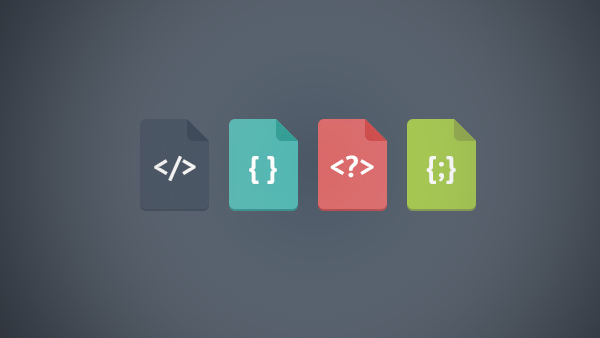flexbox规则
我们在React Native中使用flexbox规则来指定某个组件的子元素的布局。
Flexbox可以在不同屏幕尺寸上提供一致的布局结构。
一般来说,使用
flexDirection
alignItems
justifyContent
三个样式属性就已经能满足大多数布局需求。
译注:这里有一份简易布局图解,可以给你一个大概的印象。
这里自己贴一下这个网站的口诀片:

flex-direction

flex-wrap

justity-content

align-items

align-content
大体也就是下面几种情况,背背就熟悉了
flex-direction
row
row-reverse
column
column-reverse
flex-wrap
nowrap
wrap
wrap-reverse
justity-content(no flex : 1)
flex-start
center
flex-end
space-between
space-around
align-items 【(nowrap)align-self】
flex-start
center
flex-end
stretch
align-content(wrap)
stretch
flex-start
center
flex-end
space-between
space-around
React Native中的Flexbox的工作原理和web上的CSS基本一致,当然也存在少许差异。
首先是默认值不同:
flexDirection的默认值是column而不是row,
alignItems的默认值是stretch而不是flex-start,
以及flex只能指定一个数字值。
Flex Direction
在组件的style中指定flexDirection可以决定布局的主轴。
子元素是应该沿着水平轴(row)方向排列,
还是沿着竖直轴(column)方向排列呢?
默认值是竖直轴(column)方向。
简单的代码例子:
import React, { Component } from 'react';
import { AppRegistry, View } from 'react-native';class ABegin extends Component {
render() { return ( // 尝试把`flexDirection`由`row`改为`column`看看
<View style={{flex: 1, flexDirection: 'row'}}>
<View style={{width: 50, height: 50, backgroundColor: 'powderblue'}} />
<View style={{width: 50, height: 50, backgroundColor: 'skyblue'}} />
<View style={{width: 50, height: 50, backgroundColor: 'steelblue'}} />
</View>
);
}
};
AppRegistry.registerComponent('ABegin', () => ABegin);对应的效果为

我们可以容易发现,会按row去排列布局
Justify Content
在组件的style中指定justifyContent可以决定其子元素沿着主轴的排列方式。
子元素是应该靠近主轴的起始端还是末尾段分布呢?
亦或应该均匀分布?
对应的这些可选项有:
flex-start
center
flex-end
space-around
space-between
简单的代码例子:
import React, { Component } from 'react';
import { AppRegistry, View } from 'react-native';class ABegin extends Component {
render() { return ( // 尝试把`justifyContent`改为`center`看看
// 尝试把`flexDirection`改为`row`看看
<View style={{
flex: 1,
flexDirection: 'column',
justifyContent: 'space-between',
}}>
<View style={{width: 50, height: 50, backgroundColor: 'powderblue'}} />
<View style={{width: 50, height: 50, backgroundColor: 'skyblue'}} />
<View style={{width: 50, height: 50, backgroundColor: 'steelblue'}} />
</View>
);
}
};
AppRegistry.registerComponent('ABegin', () => ABegin);对应的效果为:

例子比较简单,不解释了
可以简单修改看看
Align Items
在组件的style中指定alignItems可以决定其子元素沿着次轴
(与主轴垂直的轴,比如若主轴方向为row,则次轴方向为column)的排列方式。
子元素是应该靠近次轴的起始端还是末尾段分布呢?
亦或应该均匀分布?
对应的这些可选项有:
flex-start
center
flex-end
stretch
简单的代码例子:
import React, { Component } from 'react';
import { AppRegistry, View } from 'react-native';class ABegin extends Component {
render() { return ( // 尝试把`alignItems`改为`flex-start`看看
// 尝试把`justifyContent`改为`flex-end`看看
// 尝试把`flexDirection`改为`row`看看
<View style={{
flex: 1,
flexDirection: 'column',
justifyContent: 'center',
alignItems: 'center',
}}>
<View style={{width: 50, height: 50, backgroundColor: 'powderblue'}} />
<View style={{width: 50, height: 50, backgroundColor: 'skyblue'}} />
<View style={{width: 50, height: 50, backgroundColor: 'steelblue'}} />
</View>
);
}
};
AppRegistry.registerComponent('ABegin', () => ABegin);对应的效果为:

根据上面的总结,也很好理解。
简单总结
这里也就一些需要记忆的地方
一些参考说明
具体解释,可以参考上图,或者参考说明
具体代码,
可以见
https://github.com/2954722256/react-native-demo
因为自己是拿android测试的
所以注意修改代码为:index.android.js
作者:dodo_lihao
链接:https://www.jianshu.com/p/4fa2b58d2d25






 随时随地看视频
随时随地看视频




